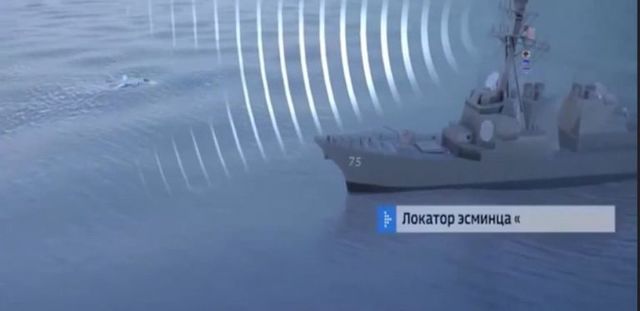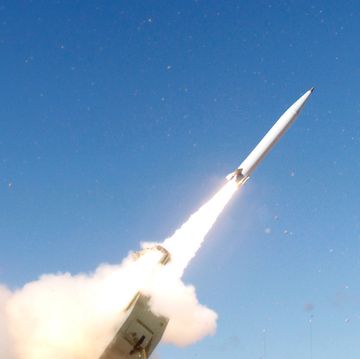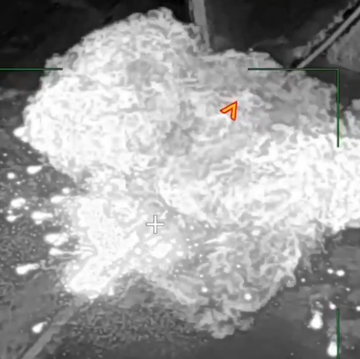A Russian TV news report covered by a UK news tabloid is a classic study in fake news reporting. The Sun article is a hot mess, claiming that Russia can "wipe out" the entire U.S. Navy with a single "electronic bomb." That is not anywhere close to being true. Here's what is.
The Russian TV report is an explainer on Russian Electronic Warfare (REW) troops, which the reporter claims can "neutralize any target" from "a ship's system to a radar to a satellite." This apparently includes synthetic aperture radars on NATO satellites, aircraft, and other platforms, which can form images of targets in the air and on the ground using radar waves. In this case, "neutralizing" doesn't mean blowing something to bits, but rather jamming its radar sensors to effectively render it blind.
The news report starts off showing one new tool in REW troops arsenal, a briefcase-shaped device called Lesochek. Lesochek works by jamming radio commands broadcast to set off improvised explosive devices. This type of device is actually not uncommon and has been used by U.S. forces for more than ten years. This is actual news.
The reporter claims REW, in an "incredible breakthrough" came up with a radar jammer that can jam enemy spy satellites, ground-based radars, and AWACs planes. The reporter then references an event in 2014, when the U.S. Navy destroyer Donald Cook was buzzed by Russian Su-24 "Fencer" strike jets in the Black Sea. Later that year, fake news outlets claimed that the Cook's radar systems were totally shut down by the Su-24's Khibiny radar jamming pod.
The Russian TV news report claims that Khibiny (which really does exist) can "deactivate the whole ship's systems." According to Russian news reports, 27 members of the Cook's crew were so shaken were they by the incident they submitted their resignations. This is the "electronic bomb" the Sun is referring to, except Khibiny is not actually dropped like a bomb but hangs off an airplane's wings.
Is there any truth to Russian claims? As Michael Peck at War Is Boring points out, probably not. For one thing, how would Russian pilots know that the Aegis radar on the Donald Cook "shut down?" A radar that is being jammed doesn't shut down; it continues to operate but cannot actually see anything. Also, jammers are used exceedingly sparingly around potential adversaries in peacetime, as their own radio signals can be scooped up, analyzed, and used to device a countermeasure.
The TV news report then shows off the Murmansk jamming system, which it says has a range of more than 3,100 miles. Murmansk, which was delivered to Russian units in 2016, can detect and jam radar signals. The result, according to the report, is something like an invisibility shield for Russian units, preventing NATO radar sensors from seeing them. Such a system is quite plausible, although describing it as an "invisibility shield" is a bit fanciful.
The Russian news report concludes with the bombastic line, "You don't need to have expensive weapons to win – powerful radio-electronic jamming is enough." That claim isn't supported by the actual report, which says REW systems can only shut down enemy radars and hide friendly forces. To actually win a war, you need to kill the enemy and break stuff—something radio waves can't do.
The Russian television and Sun tabloid story are both blends of real and fake news. Russia's electronic warfare troops do indeed have some powerful electronic warfare systems—but pay no mind to oddball claims that they can make enemy sailors resign out of sheer fear or win wars singlehandedly.

Kyle Mizokami is a writer on defense and security issues and has been at Popular Mechanics since 2015. If it involves explosions or projectiles, he's generally in favor of it. Kyle’s articles have appeared at The Daily Beast, U.S. Naval Institute News, The Diplomat, Foreign Policy, Combat Aircraft Monthly, VICE News, and others. He lives in San Francisco.















